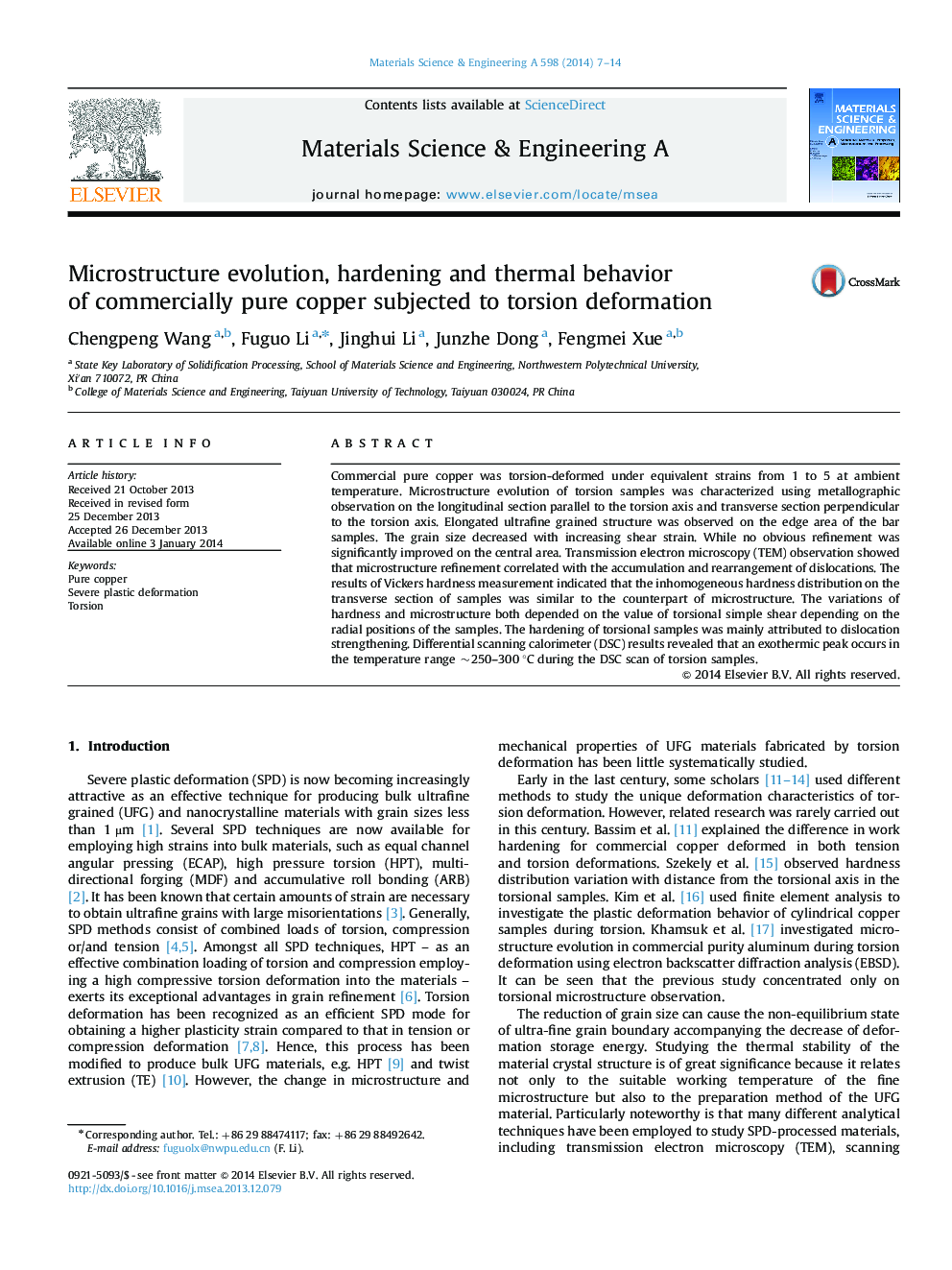| Article ID | Journal | Published Year | Pages | File Type |
|---|---|---|---|---|
| 1575334 | Materials Science and Engineering: A | 2014 | 8 Pages |
Abstract
Commercial pure copper was torsion-deformed under equivalent strains from 1 to 5 at ambient temperature. Microstructure evolution of torsion samples was characterized using metallographic observation on the longitudinal section parallel to the torsion axis and transverse section perpendicular to the torsion axis. Elongated ultrafine grained structure was observed on the edge area of the bar samples. The grain size decreased with increasing shear strain. While no obvious refinement was significantly improved on the central area. Transmission electron microscopy (TEM) observation showed that microstructure refinement correlated with the accumulation and rearrangement of dislocations. The results of Vickers hardness measurement indicated that the inhomogeneous hardness distribution on the transverse section of samples was similar to the counterpart of microstructure. The variations of hardness and microstructure both depended on the value of torsional simple shear depending on the radial positions of the samples. The hardening of torsional samples was mainly attributed to dislocation strengthening. Differential scanning calorimeter (DSC) results revealed that an exothermic peak occurs in the temperature range ~250-300 °C during the DSC scan of torsion samples.
Related Topics
Physical Sciences and Engineering
Materials Science
Materials Science (General)
Authors
Chengpeng Wang, Fuguo Li, Jinghui Li, Junzhe Dong, Fengmei Xue,
